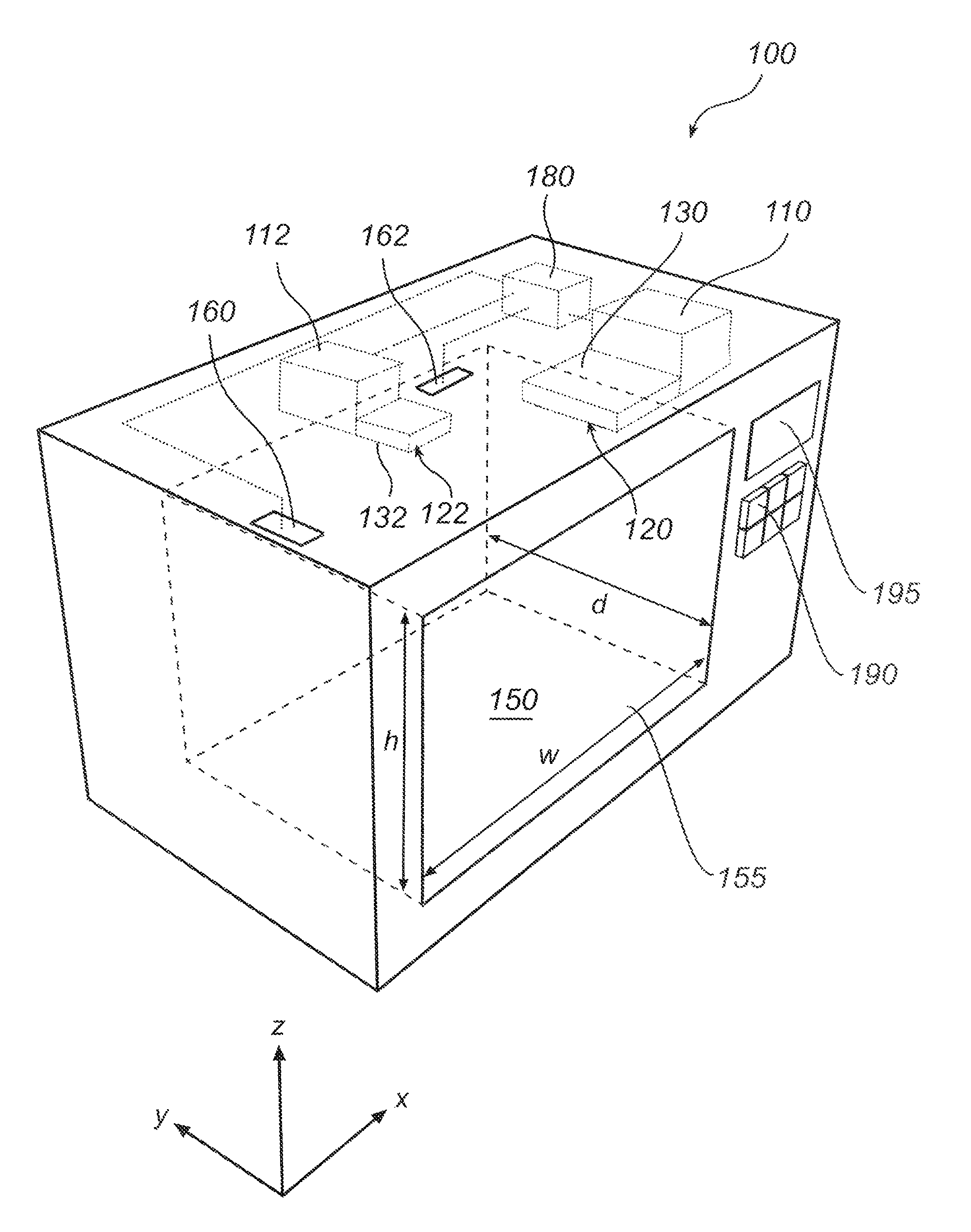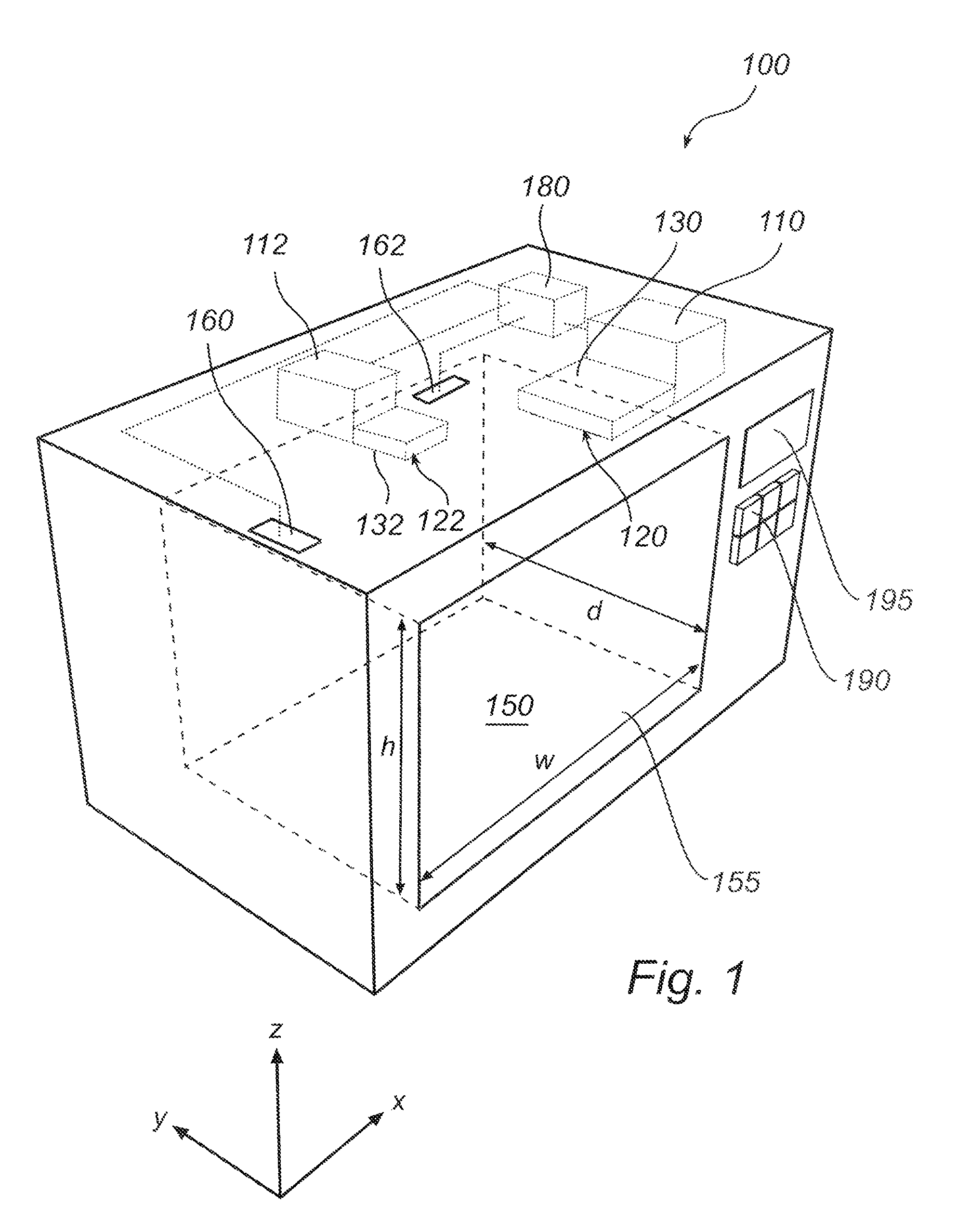Microwave oven with a regulation system using field sensors
a technology of field sensors and microwave ovens, applied in the direction of electric/magnetic/electromagnetic heating, dielectric heating, electrical apparatus, etc., can solve the problems of unsatisfactory heating uniformity, rotating or moving parts, unsatisfactory heating uniformity, etc., to improve the sensitivity of detecting mode distortion, the effect of improving energy efficiency
- Summary
- Abstract
- Description
- Claims
- Application Information
AI Technical Summary
Benefits of technology
Problems solved by technology
Method used
Image
Examples
Embodiment Construction
[0035]With reference to FIG. 1, there is shown a microwave heating device 100, e.g. a microwave oven, having features and functions according to an embodiment of the present invention.
[0036]The microwave oven 100 comprises a cavity 150 defined by an enclosing surface. One of the side walls of the cavity 150 may be equipped with a door 155 for enabling the introduction of a load, e.g. a food item, in the cavity 150. Further, the cavity 150 is provided with at least two feeding ports, a first feeding port 120 and a second feeding port 122, through which microwaves are fed into the cavity 150 of the microwave oven 100. The cavity 150 is generally made of metal.
[0037]Although the microwave oven 100 described with reference to FIG. 1 has a rectangular enclosing surface, it will be appreciated that the cavity of the microwave oven is not limited to such a shape and may, for instance, have a circular cross section, or other geometries describable in orthogonal curvilinear coordinates.
[0038...
PUM
 Login to View More
Login to View More Abstract
Description
Claims
Application Information
 Login to View More
Login to View More - R&D
- Intellectual Property
- Life Sciences
- Materials
- Tech Scout
- Unparalleled Data Quality
- Higher Quality Content
- 60% Fewer Hallucinations
Browse by: Latest US Patents, China's latest patents, Technical Efficacy Thesaurus, Application Domain, Technology Topic, Popular Technical Reports.
© 2025 PatSnap. All rights reserved.Legal|Privacy policy|Modern Slavery Act Transparency Statement|Sitemap|About US| Contact US: help@patsnap.com



